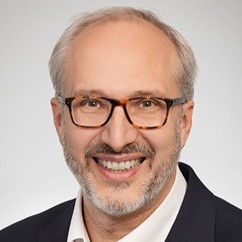Clinical Researcher—February 2024 (Volume 38, Issue 1)
SPECIAL FEATURE
Dr. Christian K Schneider
It is widely accepted that biosimilars hold the potential to improve patient access to life-changing therapies. However, questions remain about what will be needed to deliver on the promise of greater biosimilar access and affordability.
In a recent panel discussion that I moderated, industry experts weighed in on the state of the biosimilar market, today’s regulatory climate, and what will be required to realize their potential. Participants included Leah Christl, PhD, Executive Director, Head of Global Biosimilars Regulatory Affairs and Regulatory and R&D Policy, Amgen, and previously Associate Director for Therapeutic Biologics and Director, Therapeutic Biologics & Biosimilars Staff, at the U.S. Food and Drug Administration (FDA); Martin Schiestl, Global Head Regulatory Affairs Policy of Sandoz Biopharmaceuticals; and Elena Wolff-Holz, Global Head Clinical Development, Biocon Biologics, and previously chair of the European Medicines Agency’s (EMA’s) Biosimilar Medicinal Products Working Party (BMWP).
The experts provided a global perspective on where they see the biosimilar industry headed, as well as steps to support and influence efficient biosimilar development methods to take cost out of the process.
State of the Industry
Biosimilars have been on the world stage for almost two decades, with the European Union approving its first biosimilar in 2006—Omnitrope (somatropin)—and the United States establishing patent requirements for its first competitor biologic in 2015. The logic behind the promise of biosimilars is that they should be easier to produce, since they require less upfront investment in research and development (R&D) than the reference products that they mimic.
While uptake and savings did not initially meet expectations, more recently biosimilars have produced tangible savings. According to the U.S. Generic & Biosimilar Medicines Report, the U.S. healthcare industry has saved approximately $23.6 billion since the first biosimilar was introduced in 2015.{1} The number of new products also continues to grow. In Europe, the number of biosimilars has nearly doubled from 2016 to 2022, with a significant increase in competition.{2}
With an ever-increasing prevalence of chronic disorders feeding a steady stream of global demand, we have seen far greater acceptance of biosimilars by physicians and patients. For example, 15 years ago we talked about biosimilar monoclonal antibodies as being totally impossible, but these are now fairly mainstream.
To realize the promise of biosimilars, there is a need for more industry-regulator collaboration, particularly on updating and aligning the guidance to create more efficiencies based on historical learnings and product maturity.
“I’m concerned that we may be closing regulatory pathways in the future,” Christl said. “We must continue to have conversations about the science and the regulatory pathways—among manufacturers and with the regulators.”
With the development of the next European Regulatory Network Strategy coming in 2025, Wolff-Holz noted that one question looms large: Will the current guidance documents take precedence, or will they change?{3} If the latter, biosimilar companies could be forced to omit certain programs. “There are major differences in what the FDA requires and what EMA requires, for example, and this may lead to these tough decisions,” she said.
Influencing the Pathways Forward
One key issue is the inclusion of comparative efficacy studies. While traditionalists may support clinical trials that arrive at a validated endpoint on efficacy and safety, others lean toward pharmacokinetic and pharmacodynamic (PK/PD) studies that look at the totality of evidence.{4} PK/PD studies look at biomarkers on the mechanistic pathway to support biosimilarity, and such studies are both shorter and less costly.{5}
“When I was at the FDA, we talked about the totality of the evidence, not just the stepwise approach. For years, the FDA didn’t have any product-specific guidance, and part of that was to allow the space to remain as flexible as possible,” Christl said. Now in industry, she commented that starting the process using comparative analytics is the only way to fit into development timelines.
PD markers are proving themselves with less complex products. “Historically speaking, we’ve seen clear PD markers, which correlated with efficacy and are broadly acceptable,” Wolff-Holz explained. “The question is, ‘What about the more complex drugs like monoclonal antibodies?’ The problem there is that we do not have many PD markers that we trust.”
However, she noted that “there are a few examples,” with one fully approved in Europe. The challenge, she noted, is to develop a sensitive enough marker, which “can be a solution for some drugs, but it’s not the savior of the entire conundrum.”
Christl agreed, adding: “For pharmacodynamic markers, the FDA’s approach doesn’t need to be a validated surrogate endpoint.” While she noted that there was “a push to look at pharmacodynamic endpoints and markers on the mechanistic pathway,” it is just a part of the process to collect other data as a part of the study. This is where the FDA has gone, she added, starting with a biosimilars action plan and continuing with the latest iteration of the biosimilars user fee program and a formal regulatory science program.
Christl added that one of the projects under the regulatory science program involves increasing the efficiency of biosimilar development and includes research into pharmacodynamic markers. She noted that the FDA continues to work in this area through a grant program.
Industry or academia could conduct work in this area, asking questions such as: “Are those markers on the mechanistic pathway that are tied to the analytics for that biological function? Can they be tracked alongside other data that we’re collecting?,” and “Can they be informative about biosimilarity?”
The Impact of Competition
Lack of competition remains an issue since the high cost of development can make it difficult to make the case for a biosimilar when the market isn’t big enough to support return on investment.
In some cases, a biosimilar may also be considered for add-on therapy. “We try to design a study to show the add-on effect in the efficacy endpoint,” Schiestl said, noting that if the add-on effect is small but requires large clinical trials, it isn’t sustainable. With a growing trend to adopt combination therapies, the best, most effective solution would be to push for efficient requirements for biosimilar approval, Schiestl added, which means rethinking the scientific question and then determining the most appropriate study to answer it.
The shift to rare diseases also presents funding considerations. “When you are talking about a rare disease, you have a very limited patient population,” Christl said. “This makes it difficult to do even pharmacokinetic similarity studies. How can you work within the regulatory system to get the data necessary to scientifically support the right assessment? Not every product is going to look the same in terms of development. There are some things that we need to think through to get the data that we need.”
Educating Stakeholders on Reduced Clinical Trials
To gain buy-in for new biosimilar testing protocols, Christl explained that it is essential to educate stakeholders as the industry moves into new therapeutic areas. “Discussing the power of comparative analytics with clinicians is difficult,” she said.
She recalled an experience at a therapeutic conference where she received significant backlash on new testing approaches. “We were talking about the analytical similarity assessment and mentioned comparability,” she said. “It had the exact opposite effect that we expected. Clinicians came up to me afterward and basically said, ‘I don’t want to use the reference product anymore. I feel that the FDA has been keeping information from us that it’s not the same product over its lifetime.’ I think as we look at these data packages, and continue to look for efficiencies in these programs, the regulators, manufacturers, patient advocacy organizations, and therapeutic organizations all need to work together and dig into the education around that.”
Christl added, “It’s not so much getting into what’s in the data package and the specific analyses that were done. It’s talking more broadly about the pathway, the science around it, and having confidence in the regulators. That’s what matters.”
As Schiestl noted, “History tells us that once prescribers understand the science behind it, they support it. There is still a lot of misinformation out there about biosimilars. In the end, I think education is important, especially focused on separate regulatory requirements needed for regulatory decision-making. We should not do clinical studies for comfort reasons, which otherwise don’t contribute to the regulatory decision-making process.”
The contents of this article are solely the opinion of the author and the quoted sources, and do not represent the opinions of PharmaLex GmbH or its parent Cencora. PharmaLex and Cencora strongly encourage readers to review the references provided with this article and all available information related to the topics mentioned herein, and to rely on their own experience and expertise in making decisions related thereto.
References
- U.S. Generic and Biosimilar Medicines Report. https://accessiblemeds.org/sites/default/files/2022-09/AAM-2022-Generic-Biosimilar-Medicines-Savings-Report.pdf
- The Impact of Biosimilar Competition in Europe. IQVIA. https://www.iqvia.com/-/media/iqvia/pdfs/library/white-papers/the-impact-of-biosimilar-competition-in-europe-2022.pdf
- European medicines agencies network strategy to 2025. HMA and EMA. https://www.ema.europa.eu/en/documents/report/european-union-medicines-agencies-network-strategy-2025-protecting-public-health-time-rapid-change_en.pdf
- Biosimilar development process. FDA. https://www.fda.gov/files/drugs/published/Biosimilar-Development-Process.pdf
- Pharmacodynamic Biomarkers Evidentiary Considerations for Biosimilar Development and Approval. 2022. Clin Pharmacol Ther. https://www.ncbi.nlm.nih.gov/pmc/articles/PMC10092043/

Dr. Christian K Schneider is a leading authority on biosimilars and Head of Biopharma Excellence and Chief Medical Officer for Strategic Product Development Consulting at PharmaLex (now Cencora PharmaLex). He has broad global regulatory authority experience having served as chair of the European Medicines Agency’s (EMA) Biosimilar Medicinal Products Working Party (BMWP) for nine years and was one of the key architects of the agency’s advanced therapies and biosimilars framework.



